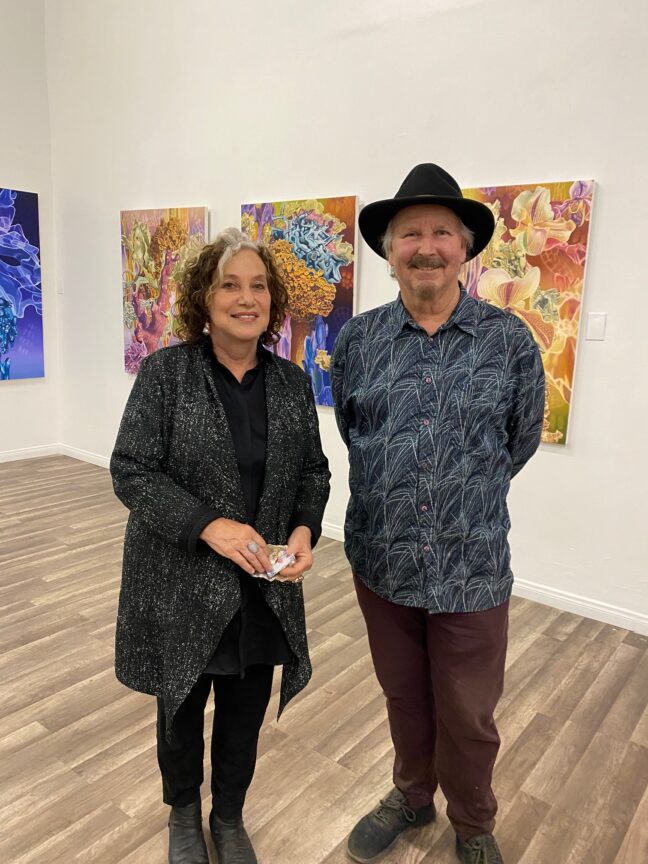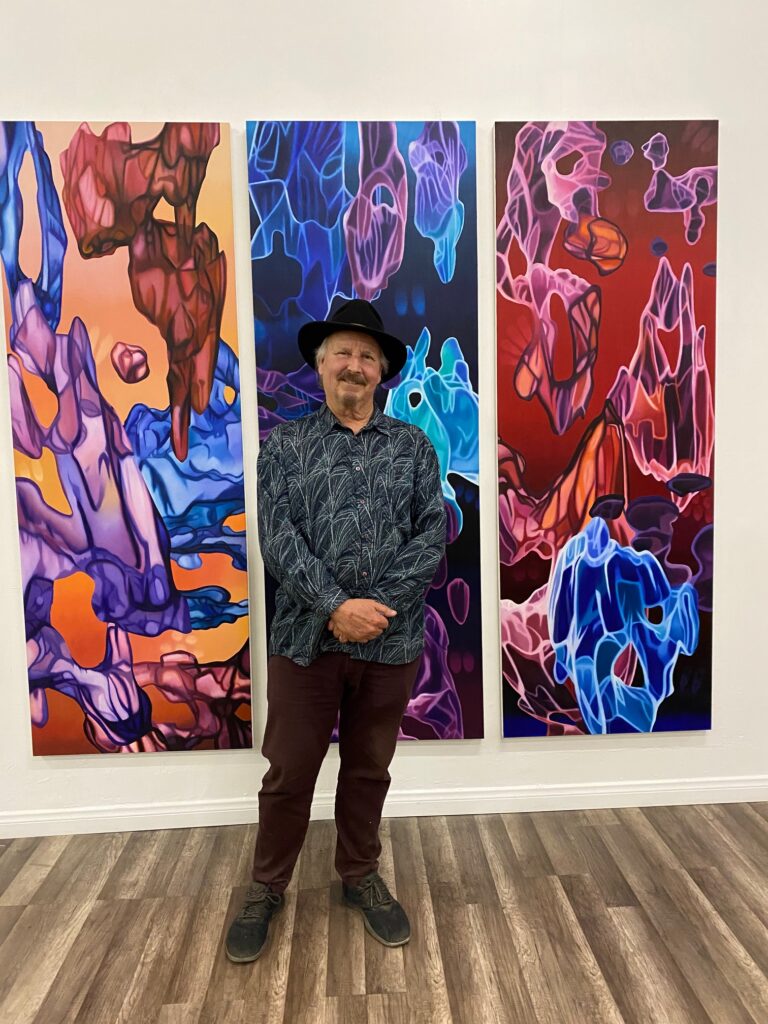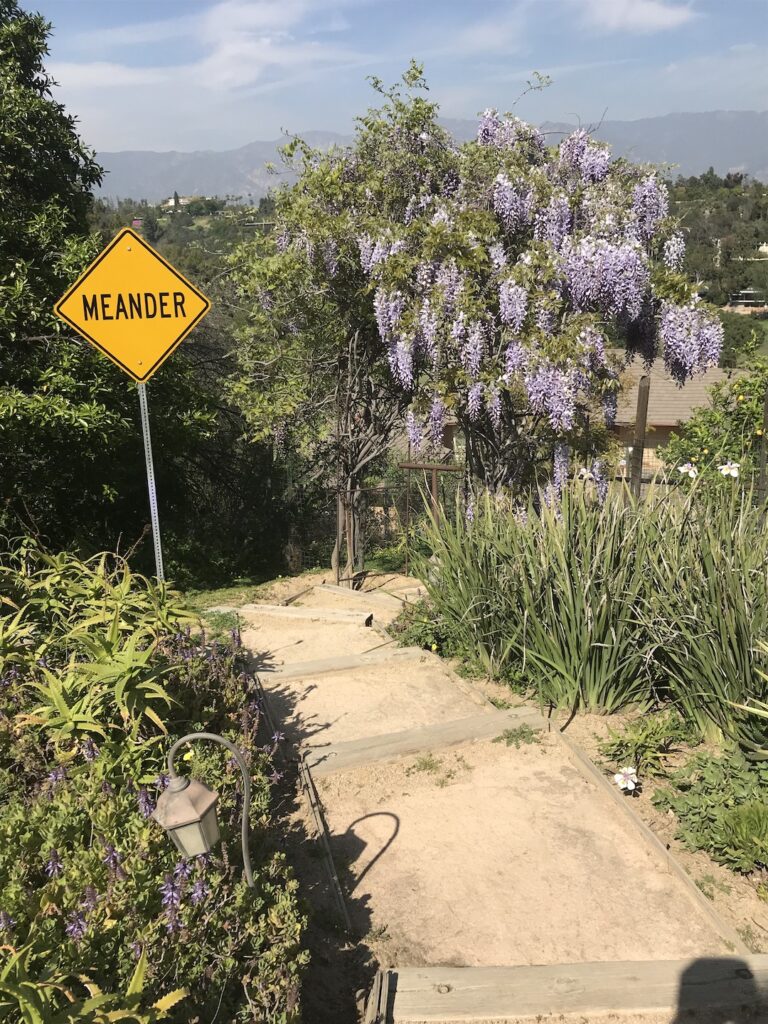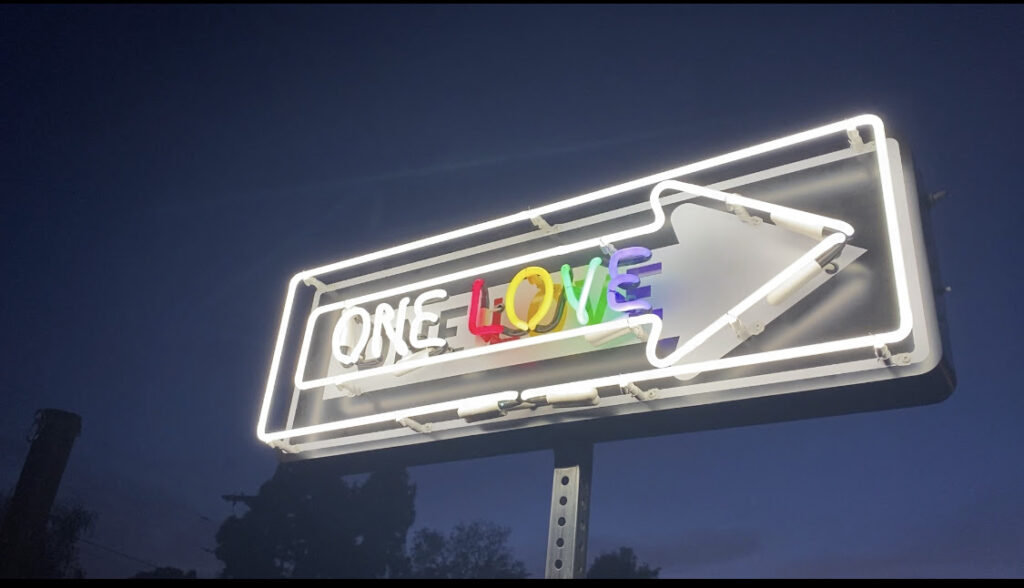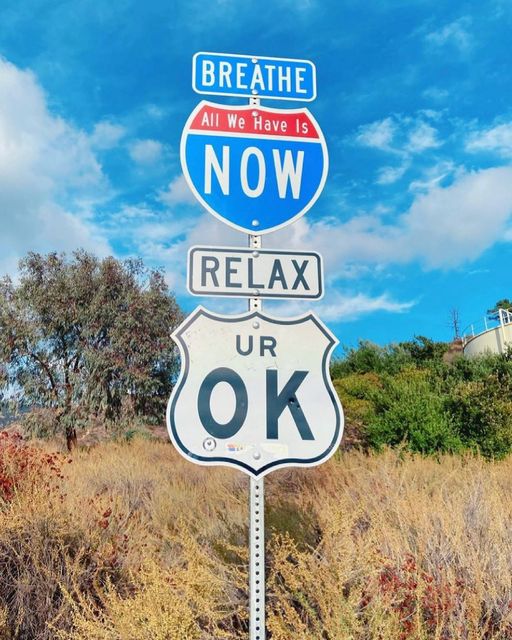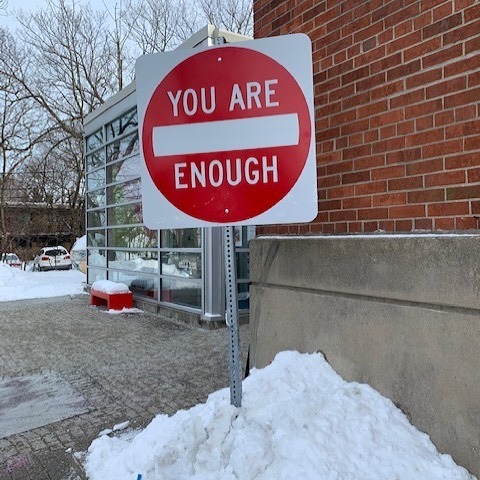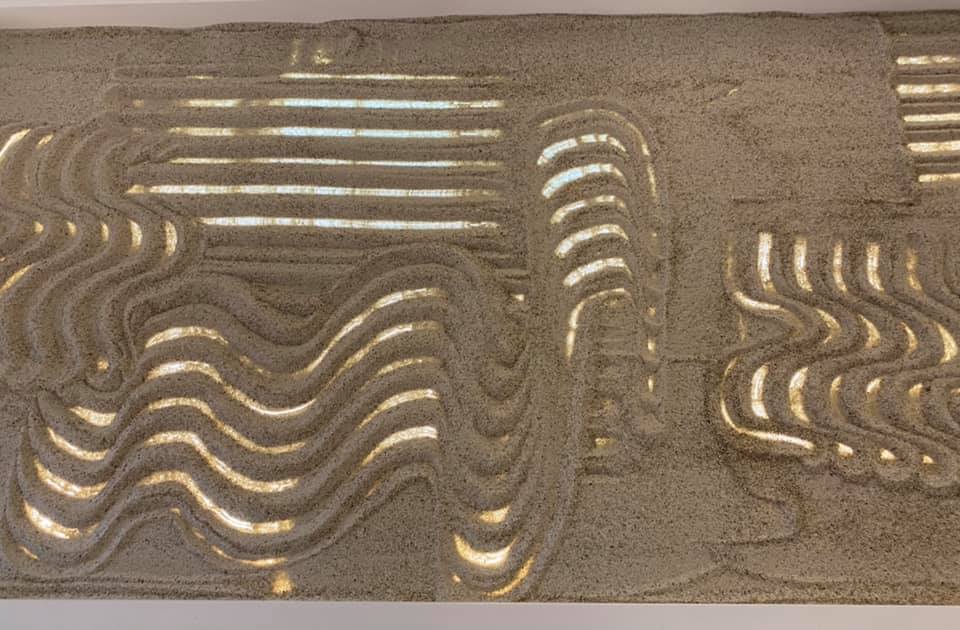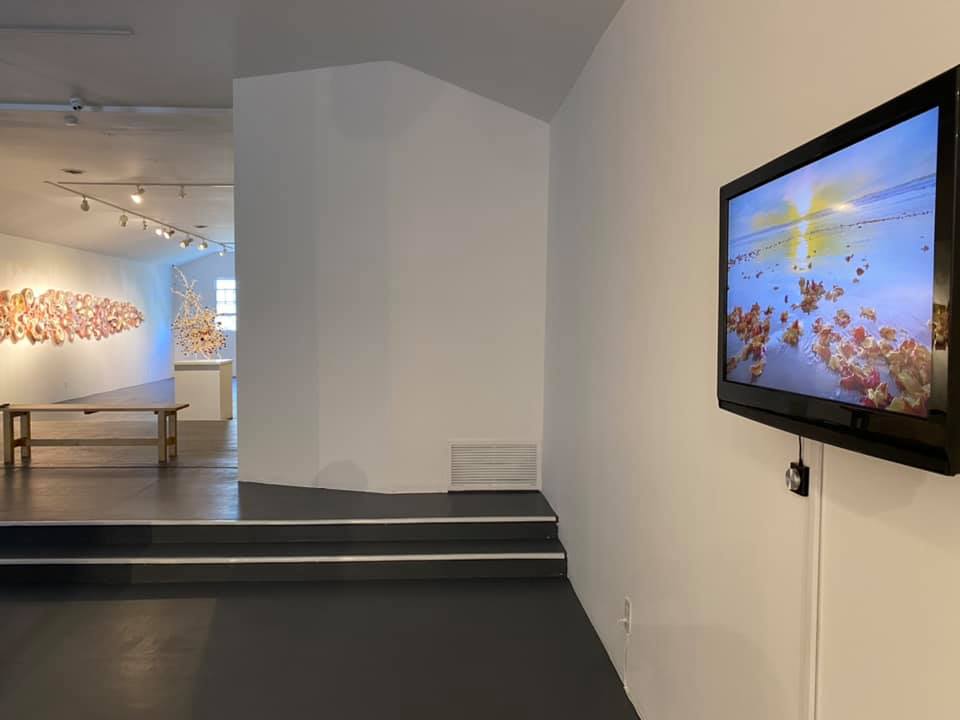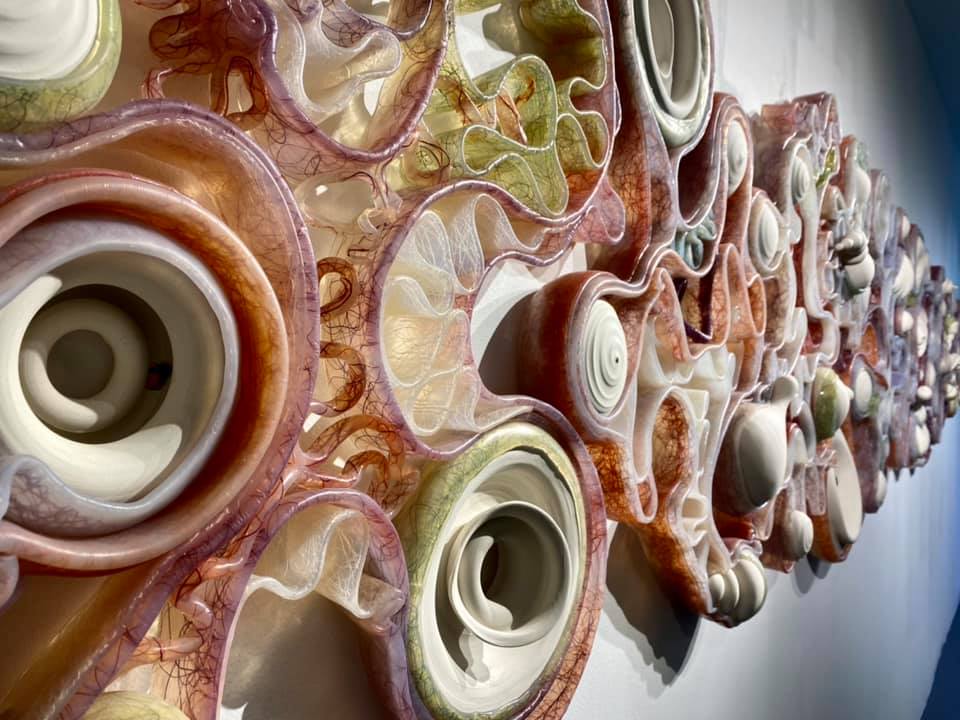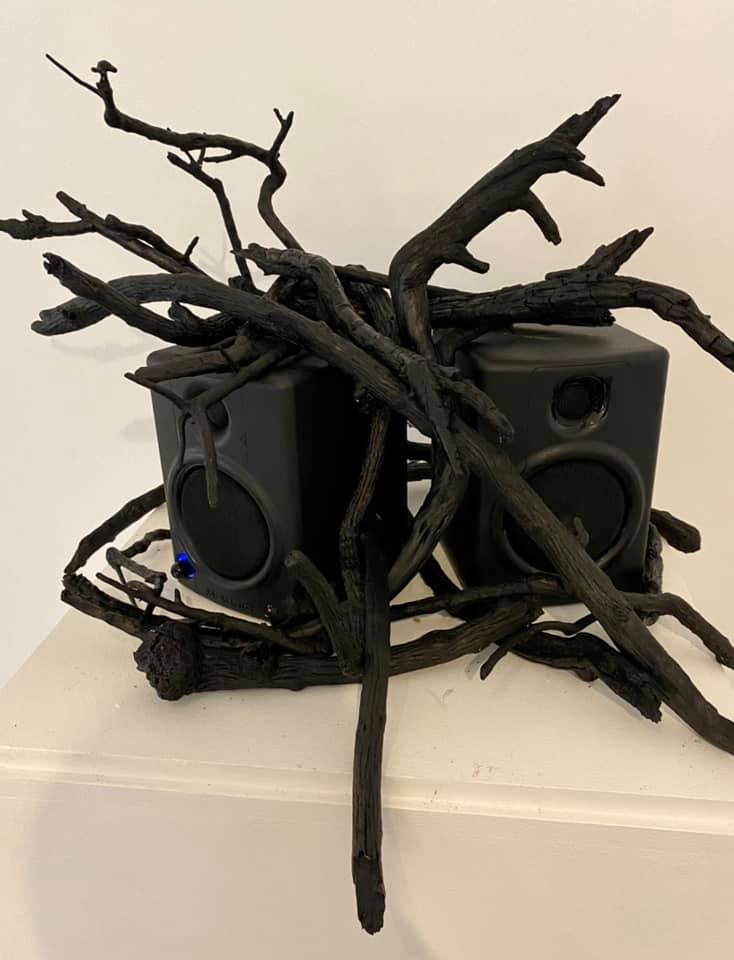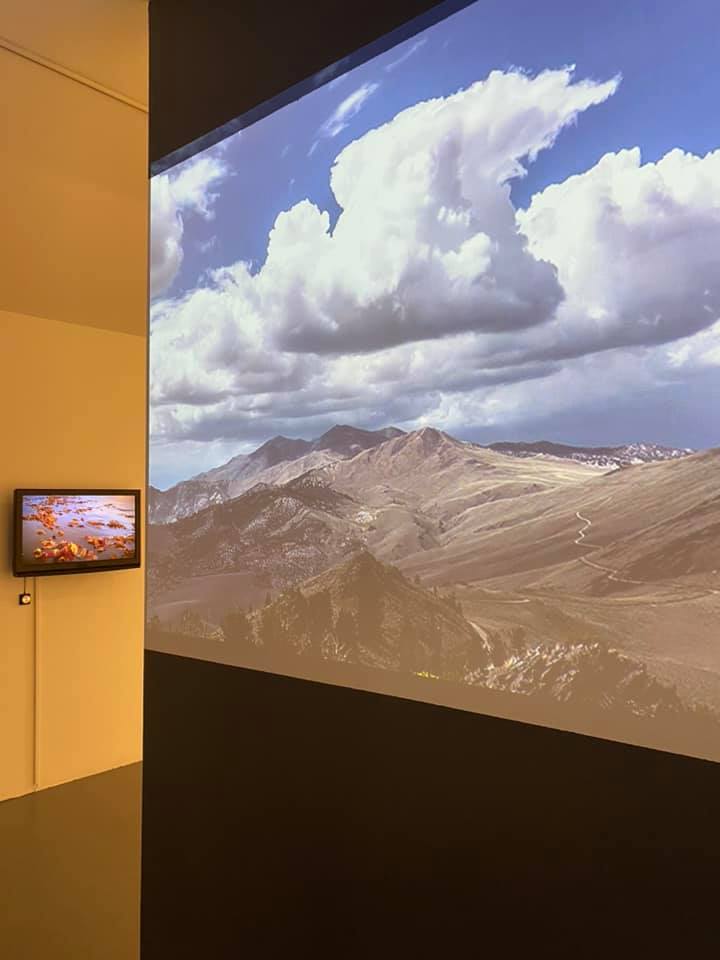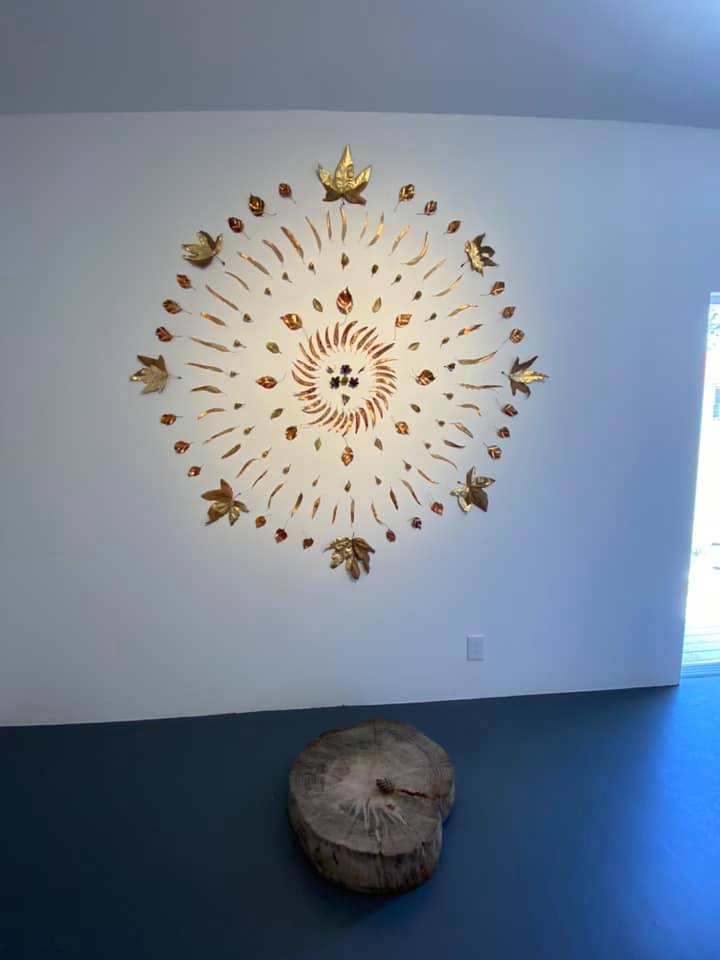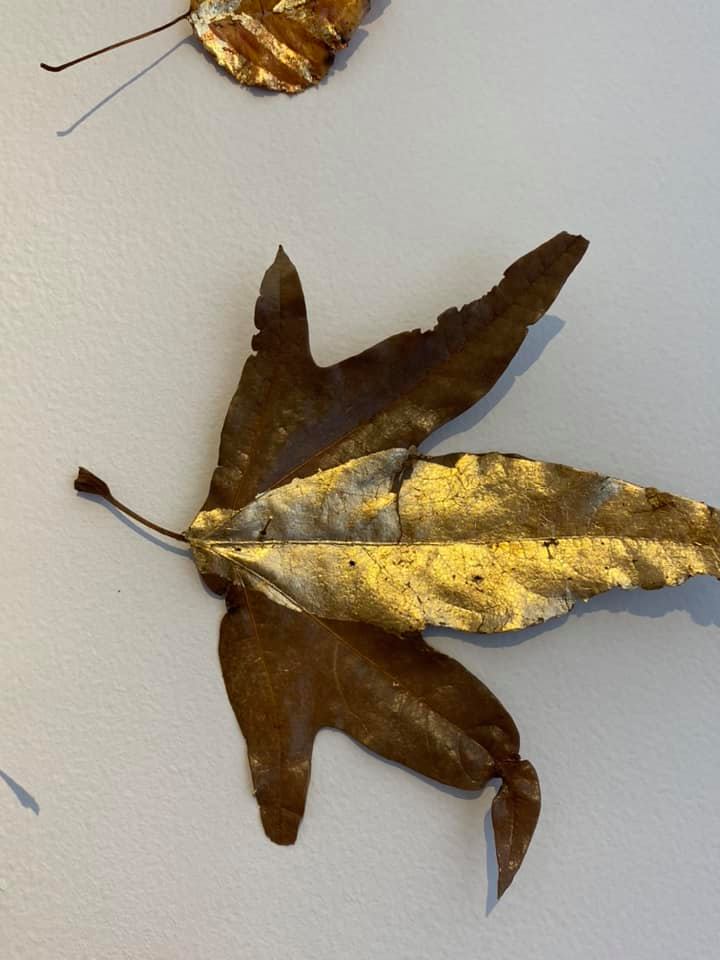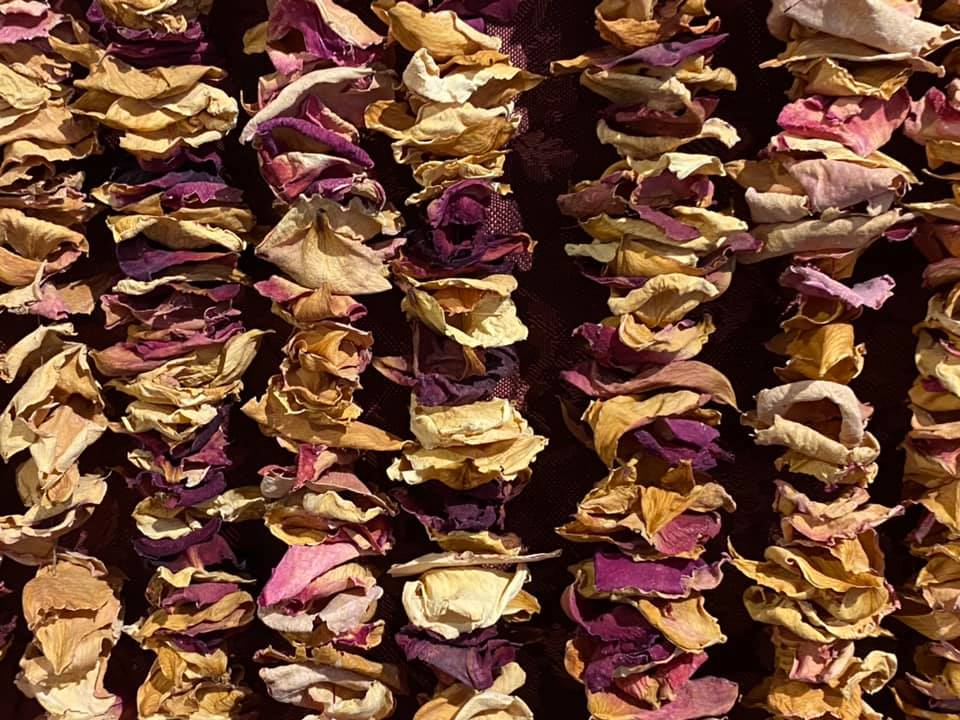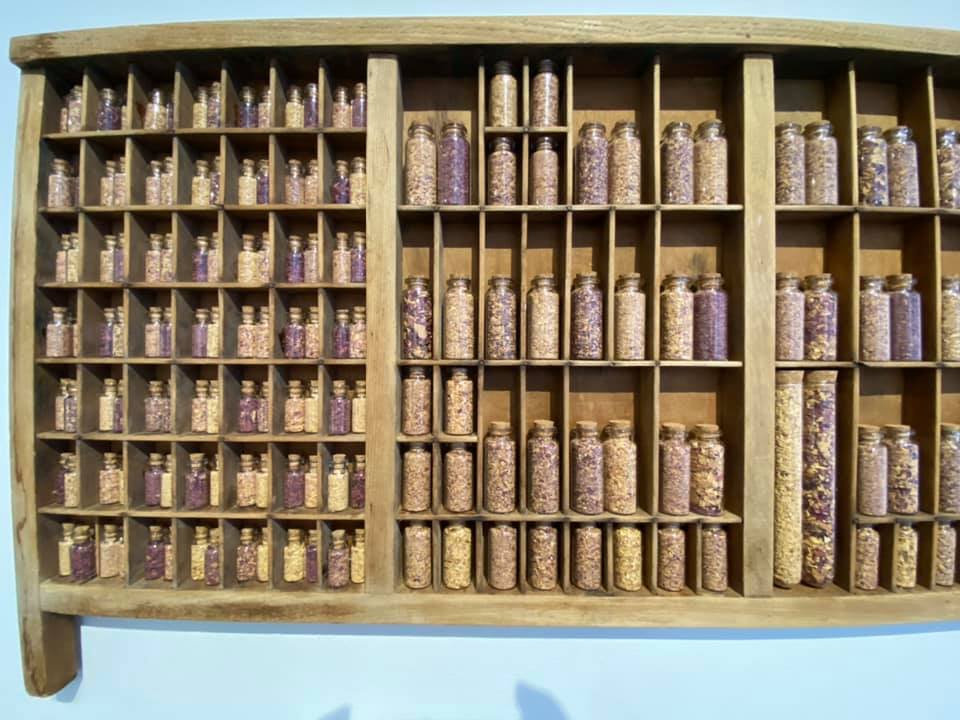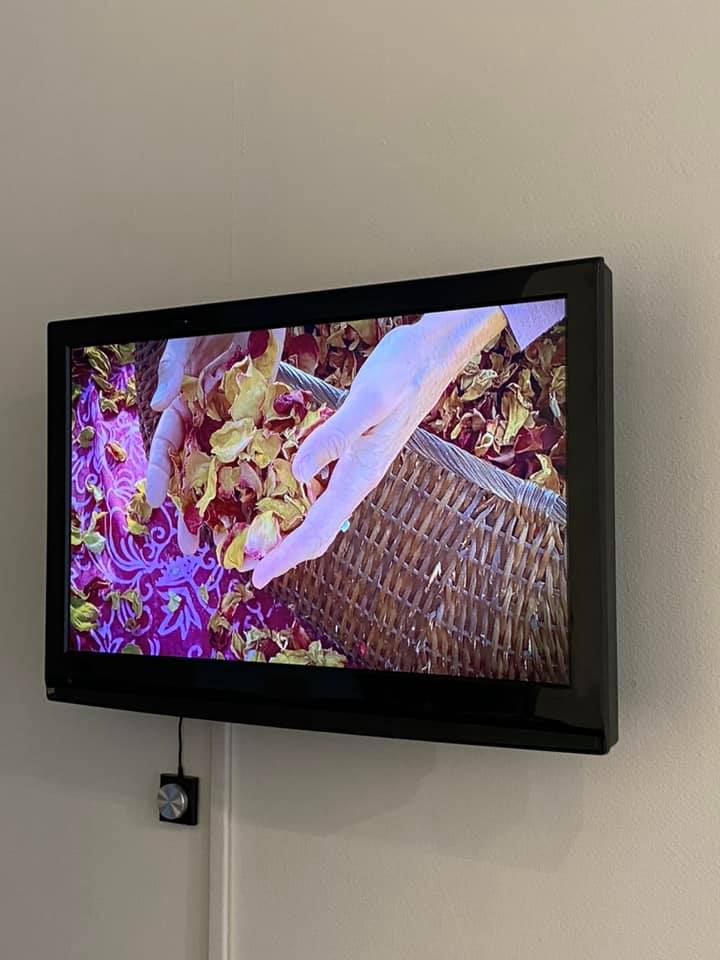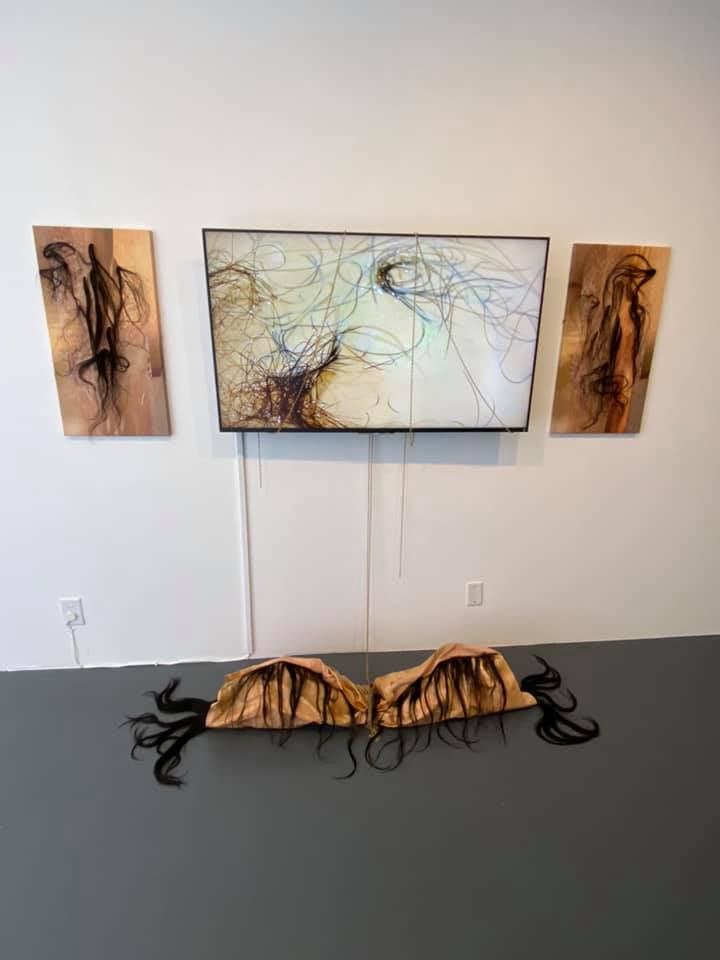There is something quite wonderful in the Cultural Undertow, something that allows the viewer to be pulled into the waters of observation willingly, and rebaptized in them. Curated by artist Narsiso Martinez, at Luna Anais Gallery in the Tin Flats exhibition space, Cultural Undertow offers a variety of works by two exciting LA-based artists, Gloria Gem Sánchez and Tidawhitney Lek.

Working in acrylic and oil, Lek’s exquisitely rendered figurative works shape involving depictions of viscerally recognizable moments in time, each filtered through a highly feminine and feminist sensibility. In one painting, a sinewy man, looking away from the viewer, glancing back toward a sunset sky, is carrying a bright pink bucket and one very large koi in Lek’s “Between the Bucket and the Sun.”

In another, a female cat and dog, rear ends directed our way, vibrant sky and brilliant orange and yellow flowers as background, serve as a prescient double entendre in “The Pussy and the Bitch.” In another lovely work, “Encounter,” dark clouds rim an intense patch of blue, and a wall, topped by flowers, separate a woman’s face from the reaching, hands and multi-colored nails of another woman on the other side of the wall. It’s both elliptical short story and mystery – they could be a couple separated but longing to see one another, they could wish each other harm. The dark clouds and that brilliant sky – it portends many things.
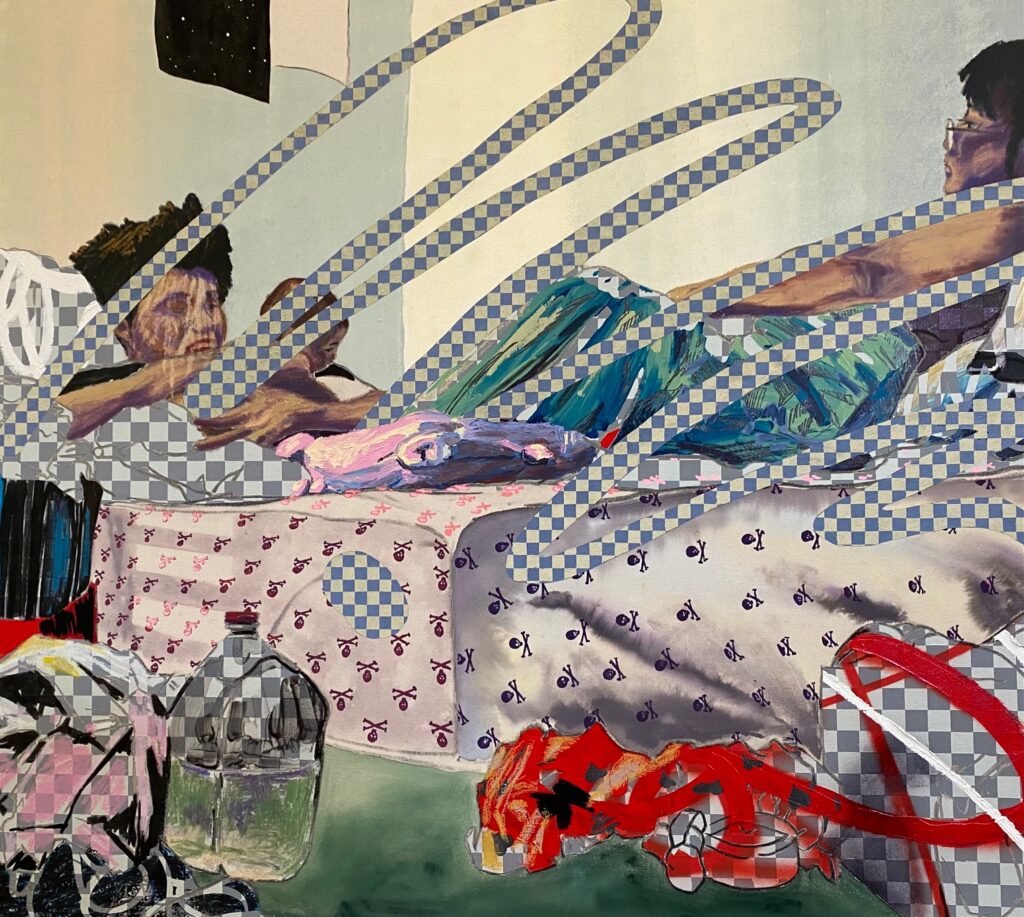
Regardless of subject, Lek’s use of startlingly vivid color, floral elements, and an underpinning of longing mark her as fresh and fascinating, a highly original talent taking both the figurative and the feminist to an entirely new and heightened level.

Sanchez’s work is entirely different, and yet Martinez’ thoughtful, conversational curation binds the two artists’ works into a cohesive and immersive experience. Sanchez offers a variety of lush mediums here. Her richly blue cyanotypes are haunting, some, as in the otherworldly figure revealed in “Twin Spirit” (far left), literally seem so; others are more abstract. Her archival photographs, like Lek’s paintings, revel in original portrayals of floral elements that celebrate personal heritage.
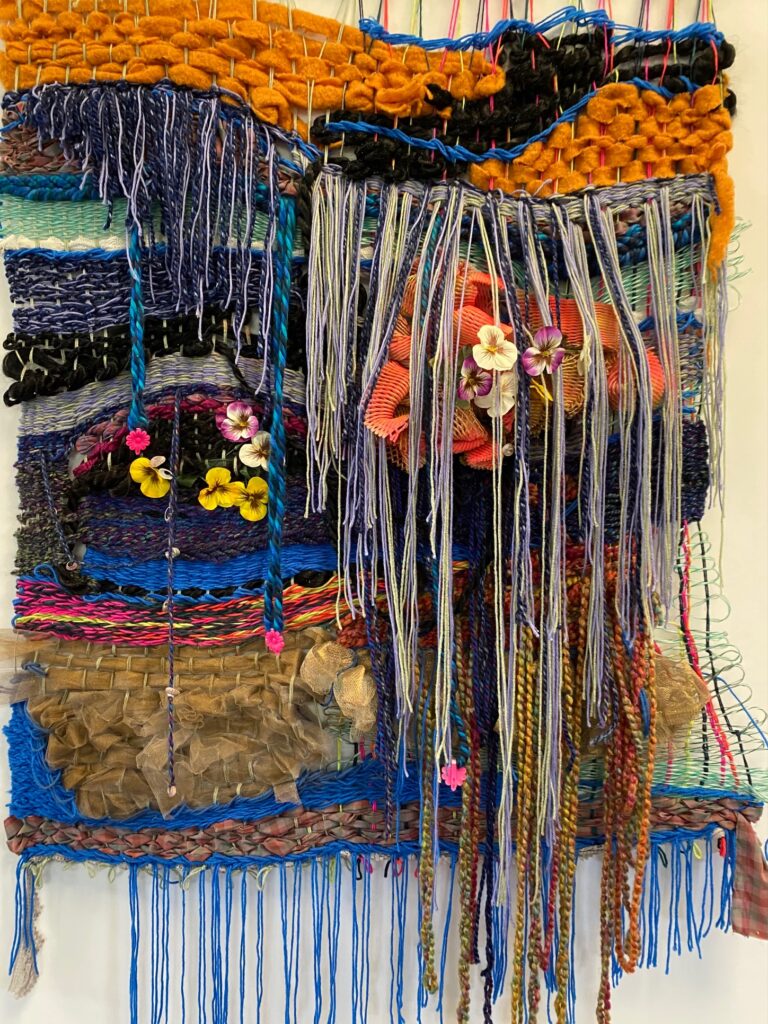
Perhaps most involving are her mixed media works, from woven, vividly colored wall work such as the tapestry that is “Nocturne Before Dawn” to her more sculptural work, each evoking something of the mystical and ritualistic, like “Araw (Sun),” consisting of a mix of shed snakeskin, bamboo, hojas de maiz, and faux hair. There is a strong element of the spiritual, even mystical, in each of these works.

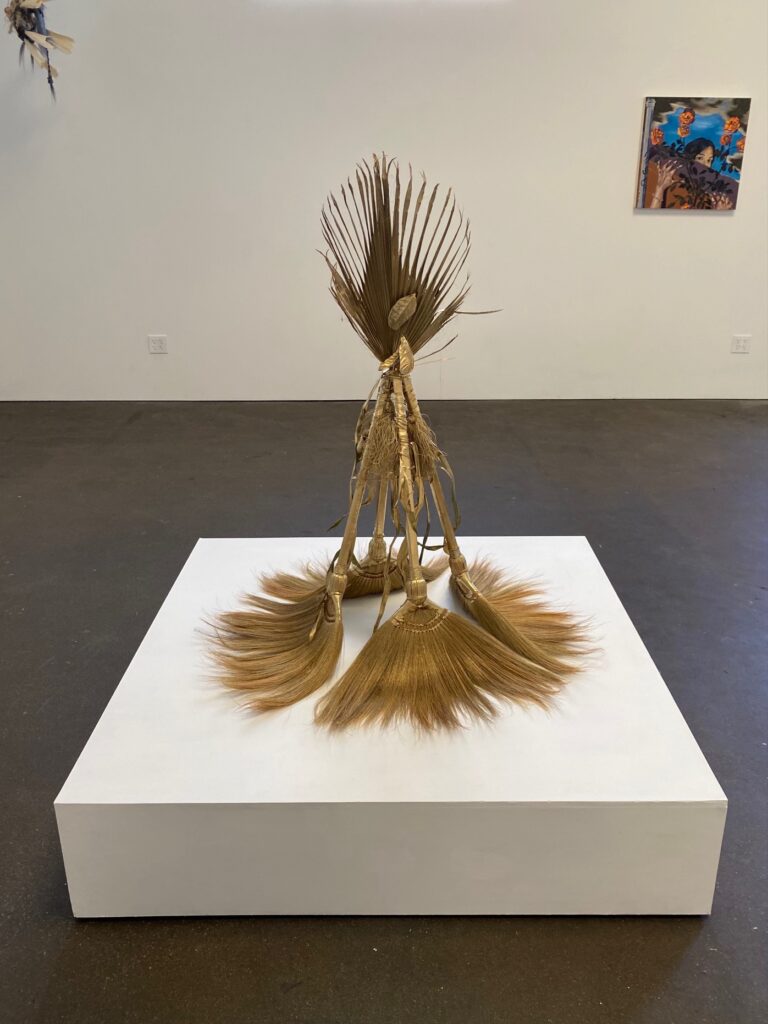
Both artists’ work arises in part from their family’s cultural roots; for Sanchez it is a Xicana-Filipina heritage and for Lek, it is Cambodian. Martinez, having celebrated his own heritage through art, including a profound sense of respect and honor revealed in paintings of Mexican farmworkers in America, is no stranger to introducing intelligent cultural references and encouraging a broadening of viewer understanding and experience through art. His attention to intimate detail and his passionate respect for often under-represented communities is fully evident in this gracious, 18-work show.

And while representing those outside the standard artistic mainstream, Cultural Undertow also serves as a galvanizing focal point for the diversity, beauty, and electrifying wonder that celebrates a variety of family backgrounds as well as an intensely feminine point of view. Perhaps most profoundly of all, the art allows us to see all of these elements as part of a beautiful, universally relatable and recognizable whole.

The exhibition is on view at Luna Anais at Tin Flats, located at 1989 Blake Avenue, Los Angeles, through July 24th.
- Genie Davis; photos: Genie Davis



